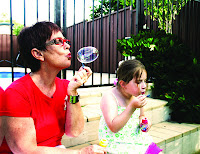Therapeutic activities for children and teens coping with health issues
By Robyn Hart and Judy Rollins.
John Wiley & Sons, Hoboken, New Jersey, 2011, 379 p. ISBN 9780470555002.
Bibliography, pp 339-364. Includes CD-ROM.
“Therapeutic activities for children and teens coping with health issues” is a book richly filled with activities to assist health professionals, child life therapists, counsellors and social workers in their work with families. Activities and related information promote adaptation and coping for children, adolescents and their families in hospital or living with health issues. It is great to see so many ideas presented in an easily readable format, with over 200 practical activities to choose from.
Chapters focus on promoting understanding and coping for adolescents and children through different aspects of their healthcare experiences. Topics of the 16 chapters include separation and anxiety, self expression, socialization and help with many aspects of coping with illness. Set out in a clear way, each topic covers an overview, special considerations and coping interventions. The theoretical framework behind each topic is outlined. Activities are set out using an easy-to-read table which includes: therapeutic goals, age group, adult/child ratio, required time, restrictions and precautions and materials. You will also find an extensive bibliography (pp 339-364) as well as black and white illustrations and photographs. The accompanying CD has activity sheets and templates that can be customised.
With a great mix of theory and hands on, this book is sure to be a helpful reference tool and provide both information and inspiration. In fact I think I’ll gather up my supplies and try my hand at making a volcano.
About the authors
Robyn Hart, director of Child Life at Rush University Medical Center in Chicago. Judy Rollins, coordinator of the Studio G Artist in Residence Program at Georgetown University Hospital and Adjunct Professor at Georgetown University School of Medicine. This is the second book they have worked together on, the previous award winning book is entitled, Therapeutic play activities for hospitalized children.
Keywords: Activities; Adaptation, psychology; Adolescent psychology; Bereavement; Body image; Child life; Child, hospitalised; Child psychology; Culture; Death; Families; Group work; Hospitalization; Medical art; Medical equipment; Mental health; Pain; Patients; Play therapy; Self-esteem; Self-expression; Therapeutic activities; Therapy
Awards
Winner of the American Journal of Nursing Book of the Year 2011
(Category: Maternal And Child Health)
Other titles also by Judy Rollins available for loan from the AWCH collection:
Meeting children’s psychosocial needs: across the health-care continuum / Judy A. Rollins, Rosemary Bolig and Carmel C. Mahan. Austin, Texas: Pro-ed, 2005. xv, 551 p.: Includes bibliographical references and index. Call number: 618.92 ROL 1
Core curriculum for the nursing care of children and their families / Marion E. Broome, Judy A. Rollins, Editors. Pitman, New Jersey: Jannetti Publications Inc., 1999. Call number: 610.7362 BRO 2
Review By:
Jillian Rattray
AWCH Librarian
March, 2013
 The motivation for the book is to support children with ASD better, health professionals in hospitals, doctors’ surgeries, dentists, administrative staff and others will be learn more about the children’s needs from this overview. Importantly, the book is engaging because it is written in a friendly, easy-to-read format and includes practical and creative techniques. Chapters cover the Medical encounter; characteristics of children with Autism Spectrum Disorders; developmental levels; assessment; interventions and supports (pp 49-73) and effective implementation of interventions and supports. A large section on interventions and supports will help to bridge knowledge gaps medical professionals may experience.
The motivation for the book is to support children with ASD better, health professionals in hospitals, doctors’ surgeries, dentists, administrative staff and others will be learn more about the children’s needs from this overview. Importantly, the book is engaging because it is written in a friendly, easy-to-read format and includes practical and creative techniques. Chapters cover the Medical encounter; characteristics of children with Autism Spectrum Disorders; developmental levels; assessment; interventions and supports (pp 49-73) and effective implementation of interventions and supports. A large section on interventions and supports will help to bridge knowledge gaps medical professionals may experience.



